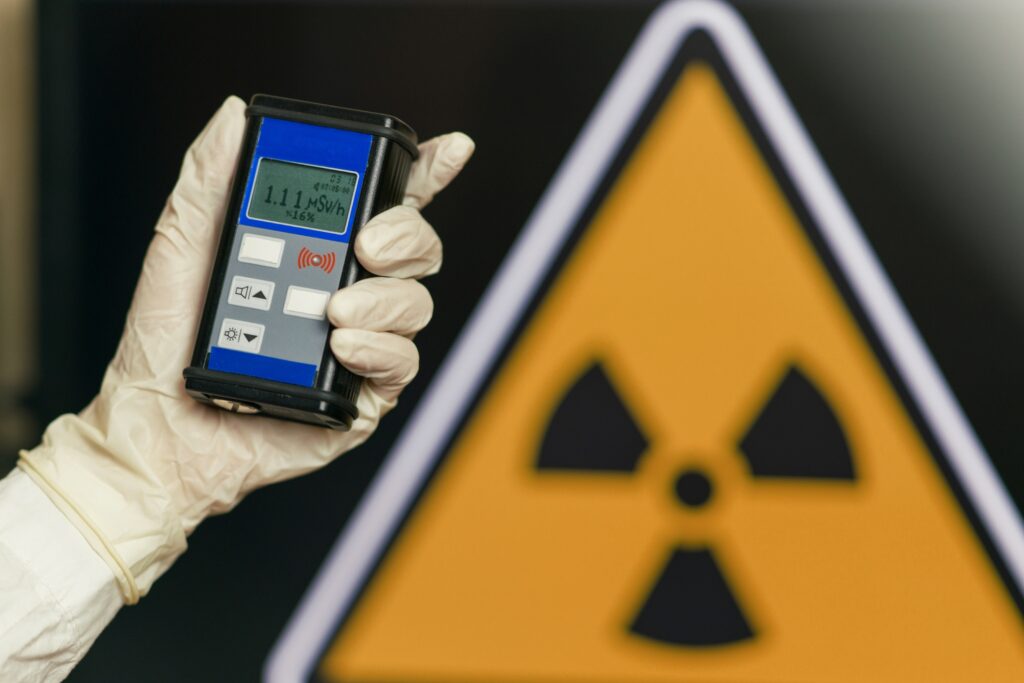This article explores the regulatory compliance and approval processes necessary for medical devices, focusing on various facets such as FDA regulations, CE marking, and international standards such as ISO 13485. Also, the article explores various innovations in medical device technology, including wearable health devices, implantable devices, smart medical devices, and telemedicine equipment. The document further examines medical device design and development, covering human-centred design, prototyping, testing, materials, and software development. It addresses medical device manufacturing, emphasising quality control, lean manufacturing, sterilisation, and supply chain management. Clinical trials and studies are discussed in detail, including preclinical testing, clinical trial phases, and post-market surveillance. Ethical and legal issues such as patient safety, data privacy, intellectual property rights, and ethical considerations are also explored. Emerging trends like AI, 3D printing, IoMT, and personalised medicine are reviewed, along with market analysis and industry insights. Finally, it covers medical device usability and user experience, focusing on ergonomics, training, user feedback, safety, and performance evaluation.
FDA (Food and Drug Administration) Regulations
The FDA plays a crucial role in regulating medical devices in the United States. Compliance with FDA regulations ensures that medical devices are safe and effective for public use. The FDA categorises medical devices into three classes based on risk. Class I devices pose the least risk and are subject to general controls. Class II devices require both general and special controls, while Class III devices, which pose the highest risk, must undergo premarket approval (PMA).
CE Marking in Europe
In Europe, medical devices must bear the CE mark, indicating conformity with health, safety, and environmental protection standards. The CE marking process involves a conformity assessment, which can vary depending on the device classification. Manufacturers must provide a technical file demonstrating compliance with the relevant directives and regulations, such as the Medical Device Regulation (MDR).
International Standards (ISO 13485)
ISO 13485 is the international standard for quality management systems in the medical device industry. It provides a framework for manufacturers to consistently ensure their products meet regulatory requirements. Compliance with ISO 13485 involves implementing a quality management system that covers all aspects of medical device production, from design and development to production and post-market activities.
Innovations in Medical Device Technology
Wearable Health Devices
Wearable health devices like fitness trackers and smartwatches monitor various health parameters. These devices must comply with regulatory standards to ensure they provide accurate and reliable data.
Implantable Devices
Due to their invasive nature, implantable devices, including pacemakers and insulin pumps, require rigorous testing and regulatory approval. Ensuring their safety and effectiveness is paramount.
Smart Medical Devices
Smart medical devices leverage connectivity and data analytics to enhance patient care. Regulatory compliance ensures these devices are secure and perform as intended.
Telemedicine Equipment
Telemedicine equipment enables remote healthcare delivery. These devices must meet regulatory standards to ensure they provide reliable and secure communication between patients and healthcare providers.
Medical Device Design and Development
Human-Centered Design
Human-centred design focuses on creating devices that effectively meet user needs. This approach involves understanding user requirements, prototyping, and iterative testing to refine the design.
Prototyping and Testing
Prototyping allows for early detection of design issues, while testing ensures the device meets performance standards. Both processes are essential for regulatory compliance.
Materials Used in Medical Devices
The selection of materials for medical devices impacts their safety and effectiveness. Regulatory bodies require thorough testing of materials to ensure biocompatibility and durability.
Software and Firmware Development for Medical Devices
Software and firmware development is critical for modern medical devices. Regulatory compliance involves rigorous testing to ensure software reliability and security.
Medical Device Manufacturing
Quality Control and Assurance
Quality control and assurance are vital to maintaining the high standards required for medical devices. This includes systematic inspections and testing throughout the manufacturing process.
Lean Manufacturing in Medical Devices
Lean manufacturing principles aim to optimise efficiency and reduce waste in medical device production. Regulatory compliance requires documenting these processes to ensure consistent product quality.
Sterilisation Processes
Sterilisation is crucial for devices intended for invasive use. Regulatory bodies mandate strict sterilisation standards to prevent infections and ensure patient safety.
Supply Chain Management
Effective supply chain management ensures the timely delivery of high-quality materials and components. Regulatory compliance involves tracking and documenting all aspects of the supply chain.
Clinical Trials and Studies
Preclinical Testing
Preclinical testing involves laboratory and animal studies to assess the safety and efficacy of a medical device before human trials. This phase is crucial for regulatory approval.
Clinical Trial Phases for Medical Devices
Clinical trials are conducted in phases, starting with small-scale studies to assess safety, followed by larger trials to evaluate efficacy. Regulatory bodies review trial data to ensure the device meets safety and performance standards.
Post-Market Surveillance
Post-market surveillance involves monitoring the device’s performance once it is on the market. This ongoing process helps identify and address any issues that arise during real-world use.
Ethical and Legal Issues
Patient Safety and Risk Management
Ensuring patient safety is paramount in medical device development. Risk management processes identify potential hazards and implement measures to mitigate them.
Data Privacy and Security
Medical devices often handle sensitive patient data. Regulatory compliance requires robust measures to protect data privacy and security.
Intellectual Property Rights
Intellectual property rights protect innovations in medical device technology. Understanding and securing these rights is crucial for maintaining a competitive edge.
Ethical Considerations in Medical Device Development
Ethical considerations involve ensuring devices are developed and used in ways that benefit patients without causing harm. This includes obtaining informed consent and conducting ethical clinical trials.
Emerging Trends and Future Directions
AI and Machine Learning in Medical Devices
AI and machine learning are revolutionising medical devices by enabling advanced diagnostics and personalised treatments. Regulatory bodies are developing frameworks to ensure these technologies are safe and effective.
3D Printing of Medical Devices
3D printing allows for customised medical devices and rapid prototyping. Regulatory compliance ensures these devices meet safety and performance standards.
Internet of Medical Things (IoMT)
The IoMT connects medical devices to healthcare networks, enhancing data sharing and patient care. Regulatory standards ensure these devices are secure and interoperable.
Personalised and Precision Medicine
Personalised and precision medicine tailors treatments to individual patients. Regulatory compliance ensures these treatments are based on accurate and reliable data.
Market Analysis and Industry Insights
Market Trends and Forecasts
Understanding market trends and forecasts helps stakeholders anticipate changes and opportunities in the medical device industry.
Key Players in the Medical Device Industry
Identifying key players provides insights into market dynamics and competitive strategies.
Investment and Funding in Medical Devices
Investment and funding are crucial for innovation and growth in the medical device industry. Understanding funding trends helps identify opportunities for development.
Challenges and Opportunities in Emerging Markets
Emerging markets present both challenges and opportunities for the medical device industry. Regulatory compliance ensures devices meet local standards while capitalising on growth potential.
Medical Device Usability and User Experience
Ergonomics and User Interface Design
Ergonomics and user interface design are critical for creating medical devices that are easy and comfortable to use.
Training and Education for Medical Device Users
Proper training and education ensure users can operate medical devices safely and effectively.
User Feedback and Product Iteration
User feedback is essential for continuously improving medical devices. Iterative development processes incorporate feedback to enhance device performance.
Safety and Performance Evaluation
Risk Assessment and Mitigation
Risk assessment and mitigation processes identify potential hazards and implement measures to prevent them.
Performance Testing and Benchmarking
Performance testing and benchmarking ensure medical devices meet required standards and perform reliably.
Incident Reporting and Adverse Event Analysis
Incident reporting and adverse event analysis help identify and address issues with medical devices, ensuring ongoing safety and effectiveness.
In conclusion, regulatory compliance and approval processes are essential for ensuring medical devices’ safety, effectiveness, and quality. Adhering to these regulations protects patients and fosters innovation and growth in the medical device industry. As technology advances and new trends emerge, regulatory frameworks will continue to evolve, ensuring that medical devices remain at the forefront of healthcare innovation.
The table below summarises the key sections and topics covered in the document on Regulatory Compliance and Approval Processes in Medical Devices:
| Section | Topic | Subtopics |
| FDA Regulations | Food and Drug Administration Regulations | Classes of devices, approval processes |
| CE Marking in Europe | European Compliance | Conformity assessment, technical files, MDR |
| International Standards | ISO 13485 | Quality management systems, regulatory requirements |
| Innovations in Medical Device Technology | Wearable Health Devices | Monitoring health parameters, regulatory compliance |
| Implantable Devices | Safety and effectiveness, regulatory approval | |
| Smart Medical Devices | Connectivity, data analytics, security | |
| Telemedicine Equipment | Remote healthcare, secure communication | |
| Medical Device Design and Development | Human-Centered Design | User requirements, prototyping, iterative testing |
| Prototyping and Testing | Detecting design issues, performance standards | |
| Materials Used in Medical Devices | Biocompatibility, durability | |
| Software and Firmware Development | Software reliability, security | |
| Medical Device Manufacturing | Quality Control and Assurance | Systematic inspections, testing |
| Lean Manufacturing | Efficiency, waste reduction, documentation | |
| Sterilisation Processes | Preventing infections, sterilisation standards | |
| Supply Chain Management | Timely delivery, tracking, documentation | |
| Clinical Trials and Studies | Preclinical Testing | Laboratory and animal studies, safety and efficacy |
| Clinical Trial Phases | Safety assessment, efficacy evaluation | |
| Post-Market Surveillance | Monitoring performance, addressing issues | |
| Ethical and Legal Issues | Patient Safety and Risk Management | Identifying hazards, mitigation measures |
| Data Privacy and Security | Protecting patient data, regulatory requirements | |
| Intellectual Property Rights | Securing innovations, competitive edge | |
| Ethical Considerations | Informed consent, ethical trials | |
| Emerging Trends and Future Directions | AI and Machine Learning | Advanced diagnostics, personalised treatments |
| 3D printing | Customised devices, rapid prototyping | |
| Internet of Medical Things (IoMT) | Connectivity, data sharing, interoperability | |
| Personalised and Precision Medicine | Tailored treatments, reliable data | |
| Market Analysis and Industry Insights | Market Trends and Forecasts | Anticipating changes, opportunities |
| Key Players | Market dynamics, competitive strategies | |
| Investment and Funding | Innovation, growth opportunities | |
| Challenges and Opportunities in Emerging Markets | Local standards, growth potential | |
| Medical Device Usability and User Experience | Ergonomics and User Interface Design | Ease of use, comfort |
| Training and Education | Safe and effective operation | |
| User Feedback and Product Iteration | Continuous improvement, performance enhancement | |
| Safety and Performance Evaluation | Risk Assessment and Mitigation | Identifying hazards, prevention measures |
| Performance Testing and Benchmarking | Meeting standards, reliable performance | |
| Incident Reporting and Adverse Event Analysis | Identifying issues, ensuring safety |
Q&A
FDA Regulations
Q: According to the FDA, what are the three classes of medical devices?
A: The FDA categorises medical devices into three classes based on risk: Class I devices pose the least risk and are subject to general controls; Class II devices require both general and special controls; Class III devices, which pose the highest risk, must undergo premarket approval (PMA).
CE Marking in Europe
Q: What is the purpose of CE marking for medical devices in Europe?
A: CE marking indicates conformity with European health, safety, and environmental protection standards. It involves a conformity assessment and the provision of a technical file demonstrating compliance with relevant directives and regulations, such as the Medical Device Regulation (MDR).
International Standards (ISO 13485)
Q: What is ISO 13485 standardised in the medical device industry?
A: ISO 13485 standardises quality management systems in the medical device industry, providing a framework for manufacturers to consistently ensure their products meet regulatory requirements. It covers all aspects of medical device production, from design and development to production and post-market activities.
Innovations in Medical Device Technology
Q: Why is regulatory compliance important for wearable health devices?
A: Regulatory compliance is important for wearable health devices to ensure they provide accurate and reliable health monitoring data and meet safety and effectiveness standards.
Q: What is a significant regulatory consideration for implantable devices?
A: Implantable devices require rigorous testing and regulatory approval due to their invasive nature, ensuring patient safety and effectiveness.
Medical Device Design and Development
Q: What is the focus of human-centred design in medical devices?
A: Human-centered design focuses on creating devices that effectively meet user needs. It involves understanding user requirements, prototyping, and iterative testing to refine the design.
Q: Why is the selection of materials crucial in medical device manufacturing? A: The selection of materials is crucial because it impacts the safety and effectiveness of the device. Regulatory bodies require thorough testing of materials to ensure biocompatibility and durability.
Medical Device Manufacturing
Q: What is the role of quality control and assurance in medical device manufacturing?
A: Quality control and assurance are vital for maintaining high standards in medical device production. They involve systematic inspections and testing throughout the manufacturing process.
Q: What are the benefits of lean manufacturing in medical device production?
A: Lean manufacturing aims to optimise efficiency and reduce waste in production. Regulatory compliance requires documenting these processes to ensure consistent product quality.
Clinical Trials and Studies
Q: What is the purpose of preclinical testing in medical device development?
A: Preclinical testing involves laboratory and animal studies to assess the safety and efficacy of a medical device before human trials, providing crucial data for regulatory approval.
Q: What is the significance of post-market surveillance for medical devices?
A: Post-market surveillance involves monitoring the device’s performance once it is on the market, helping to identify and address any issues that arise during real-world use, and ensuring ongoing safety and effectiveness.
Ethical and Legal Issues
Q: Why is patient safety and risk management crucial in medical device development?
A: Ensuring patient safety is paramount, and risk management processes help identify potential hazards and implement measures to mitigate them, preventing harm to patients.
Q: How do ethical considerations impact medical device development?
A: Ethical considerations ensure that devices are developed and used in ways that benefit patients without causing harm, including obtaining informed consent and conducting ethical clinical trials.
Emerging Trends and Future Directions
Q: How are AI and machine learning transforming medical devices?
AI and machine learning are revolutionising medical devices by enabling advanced diagnostics and personalised treatments. Regulatory bodies are developing frameworks to ensure these technologies are safe and effective.
Q: What are the advantages of 3D printing in medical device manufacturing?
A: 3D printing allows for customised medical devices and rapid prototyping, ensuring devices meet safety and performance standards through regulatory compliance.
Market Analysis and Industry Insights
Q: Why is understanding market trends and forecasts important in the medical device industry?
A: Understanding market trends and forecasts helps stakeholders anticipate changes and opportunities, allowing them to strategise and innovate effectively in a competitive market.
Q: What challenges and opportunities do emerging markets present for the medical device industry?
A: Emerging markets present challenges, such as meeting local regulatory standards, but offer significant growth potential for the medical device industry.
Medical Device Usability and User Experience
Q: What is the role of ergonomics and user interface design in medical devices?
A: Ergonomics and user interface design are critical for creating medical devices that are easy and comfortable to use, enhancing user experience and safety.
Q: How does user feedback contribute to medical device development?
A: User feedback is essential for continuous improvement, allowing iterative development processes to incorporate feedback and enhance device performance.
Safety and Performance Evaluation
Q: What is the purpose of risk assessment and mitigation in medical device evaluation?
A: Risk assessment and mitigation identify potential hazards and implement measures to prevent them, ensuring the safety and reliability of medical devices.
Q: How does performance testing and benchmarking ensure the quality of medical devices?
A: Performance testing and benchmarking ensure that medical devices meet required standards and perform reliably, providing assurance of their safety and effectiveness.
Disclaimer
The content of this article is intended for informational and educational purposes only and does not constitute legal, regulatory, medical, or professional advice. Open MedScience makes every effort to ensure the accuracy and reliability of the information provided, but no guarantees are made regarding its completeness, currency, or applicability to specific circumstances.
Regulatory requirements and approval processes for medical devices may vary between jurisdictions and are subject to change. Readers are strongly advised to consult with qualified legal, regulatory, or industry professionals before acting on any information contained herein. Any reliance placed on the content of this article is strictly at the reader’s own risk.
Open MedScience accepts no liability for any direct, indirect, incidental, or consequential loss or damage that may arise from the use or misuse of the information provided. Inclusion of references to regulatory bodies such as the FDA, CE, or ISO does not imply endorsement or official affiliation.
This article does not substitute for official guidance issued by regulatory authorities or standards organisations. Manufacturers and other stakeholders are responsible for ensuring compliance with all applicable laws, regulations, and standards in the jurisdictions where their medical devices are marketed or used.
You are here: home » diagnostic medical imaging blog »



